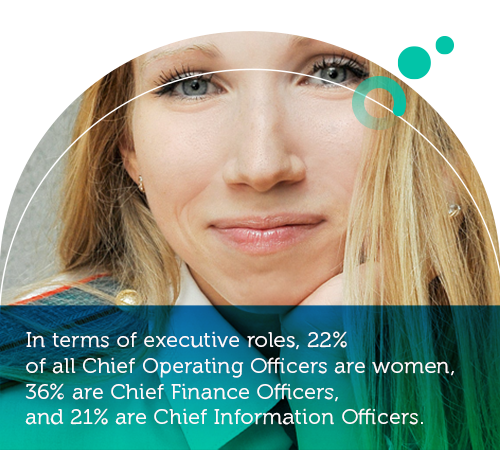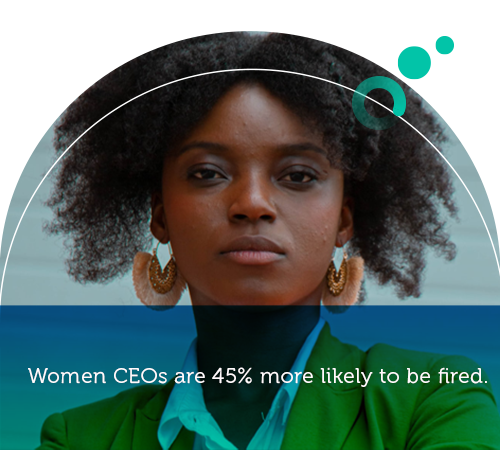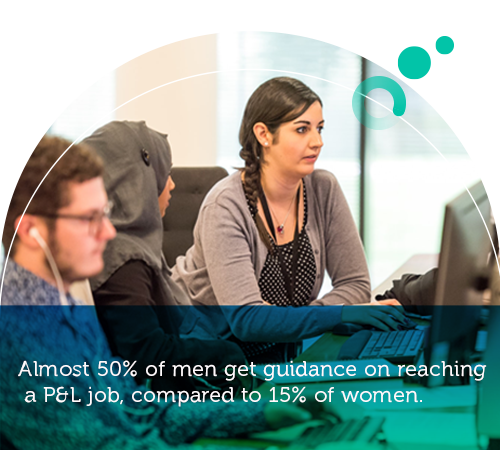
How Returning to the Office is Affecting Women?
Unlock a more inclusive, supportive, and empowering future for women in the workforce.

Female leadership is assertive, inclusive, and empowering. Yet, the latest women in leadership statistics still, very clearly, point out the gender disparity in management roles.
In 1889, Anna Bissell became the first-ever female CEO in America. Her carpet sweeper company was acknowledged by Queen Victoria herself and became a sweeping success. Female CEOs have come a long way since the 1880s, and women now make up roughly 30% of all leadership roles.
But, despite reaching several leadership milestones in the last couple of years, women still remain highly underrepresented.
The wage gap remains an issue, stereotyping and microaggression are part of the job, and women are even more prone to burnout after the pandemic.
The need for change is evident. But to make a difference, we first need to understand the issue. These women in leadership statistics are a great start.
Women can, in fact, have it all. But how much will this affect them compared to their male counterparts?
Male vs. female CEO statistics show that the business world enforces double standards, further widening the gender gap. Because women are more often the caregivers, they are less likely to get promoted. Moreover, women earn less than men in the same positions.
Still, female CEOs are on the rise worldwide, showing that women are determined and resilient, two characteristics fitting for a great leader.


Women are strong leaders.
Although both men and women possess specific leadership strengths, women tend to be more supportive and inclusive.
Over the years, many studies have shown how women outperform men in some aspects of leadership. For example, they are more likely to possess emotional intelligence, self-control, awareness, social skills, and even prosocial and moral orientation. On the other hand, men gravitate towards “dark side” personality traits.
So why are male managers vs. female managers statistics still showing a very apparent gender and wage gap in the workforce?
Unfortunately, society remains gender-biased.
Women lack representation in leadership roles, despite being twice as likely to spend time on DEI, speak out against discrimination and educate themselves about the challenges in the workforce.
A Groupon survey focusing on women-owned small businesses found that 54% experienced double standards. They also said that they find it challenging to balance work and family. Women who juggle between duties are more likely to experience burnout and downshift their careers.
There’s also an increase of women leaving the workforce altogether. In fact, Latinas were most affected by this as 43% of them spend five or more hours in caregiving and housework.

The challenges and societal pressure, even the COVID-19 pandemic, put women in leadership roles at a disadvantage, setting back their professional advancement by five years.
A somewhat positive outlook is the increasing trend of women bosses that will likely continue. Here’s what the women in leadership statistics have to say on that:
Business gender statistics favor men in general. But different industries have different gender portrayals.
The percentage of female representation in the talent pipeline varies by job sector. Still, women leaders remain the minority, even in the most female-friendly industries.

Fortune Magazine ranks the top-performing U.S. companies in their Fortune 500 list every year. First introduced in 1955, it wasn’t until 1972 that the first woman ever, Katharine Graham, CEO of The Washington Post, appeared on the list. Since then, women’s representation has grown, but these Fortune 500 CEO statistics show that we still have a long way to go.
There have been debates about women’s abilities to lead throughout history, often attributing their emotions as an argument against them. But an emotional leader is also a compassionate one who listens to and takes care of their employees.
In times of a notable labor shortage, the workforce could use more of that.
Recent women in leadership statistics show that companies are trying to narrow the gender gap. But to make a difference, they must create more accepting work environments and provide equal opportunities for mentorship early on in women’s careers. That’s the most effective way to build a solid corporate pipeline of women leaders in the nearest future.
Browse our curated list of vendors to find the best solution for your needs.
Subscribe to our newsletter for the latest trends, expert tips, and workplace insights!

Unlock a more inclusive, supportive, and empowering future for women in the workforce.

Creating a safe and inclusive society is impossible when the workplace does not reflect that. Thus, corporate America has some catching up to do when it comes to LGBTQ+ inclusion in the workplace.

Explore the comprehensive affirmative action statistics, gaining valuable insights into the impact and effectiveness of affirmative action policies in promoting diversity, equity, and inclusion in various sectors.

Transform your workplace into an inclusive and empowering environment for women with these eye-opening statistics. Unlock the potential of gender diversity and drive positive change in your organization.
Used by most of the top employee benefits consultants in the US, Shortlister is where you can find, research and select HR and benefits vendors for your clients.
Shortlister helps you reach your ideal prospects. Claim your free account to control your message and receive employer, consultant and health plan leads.